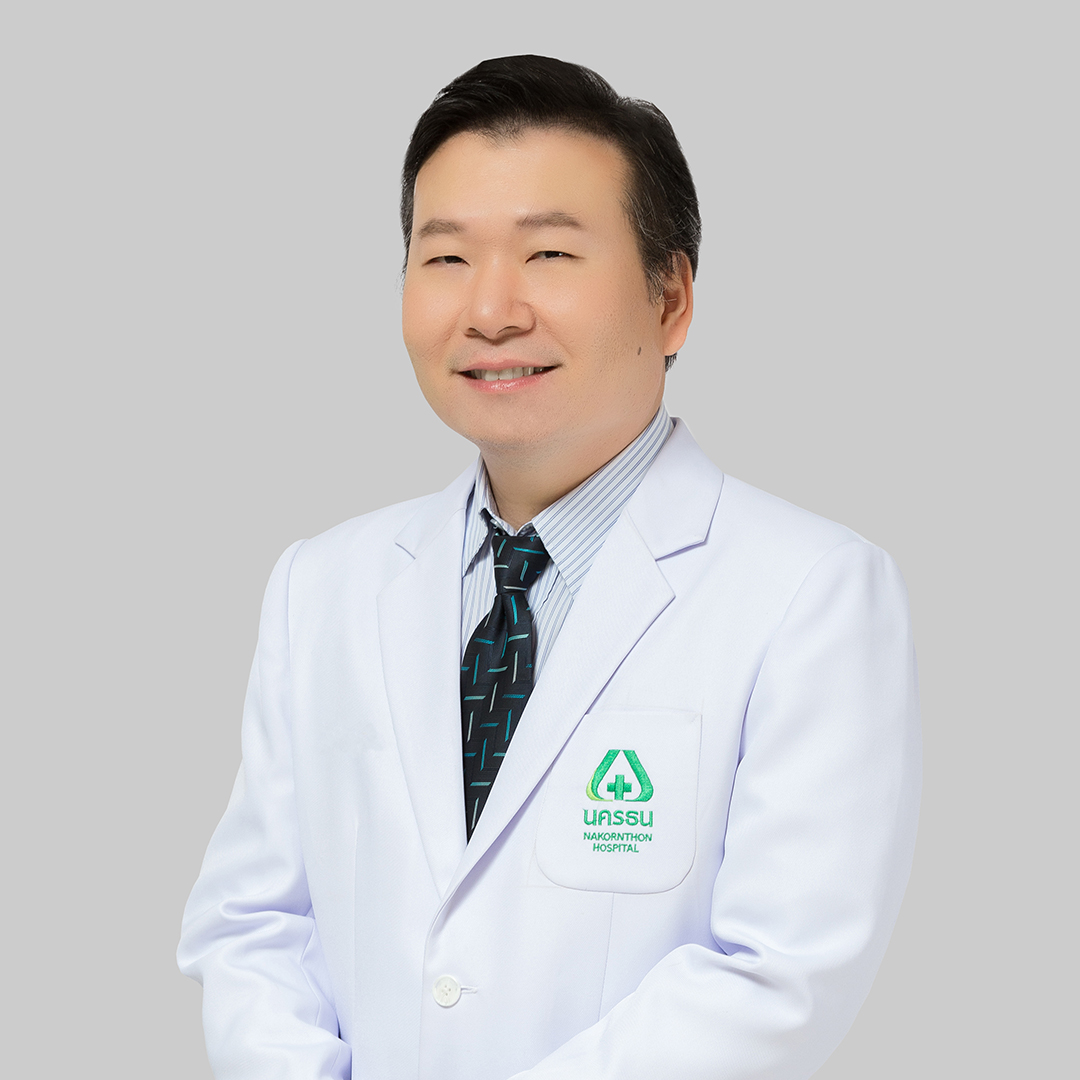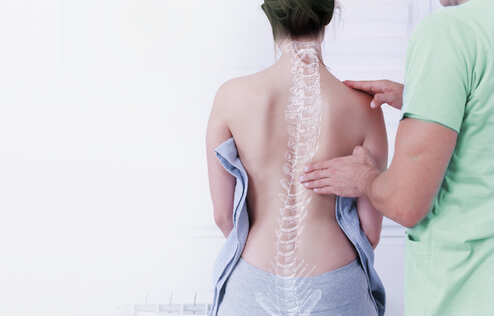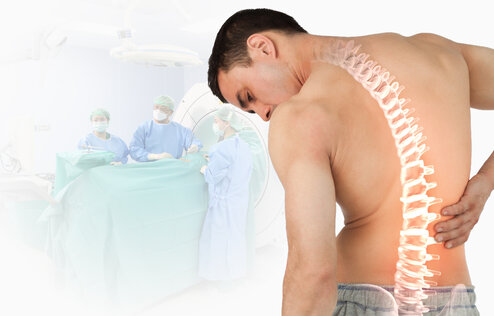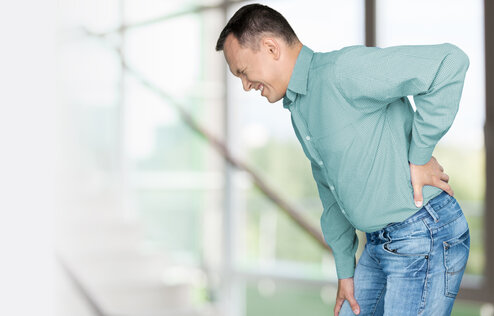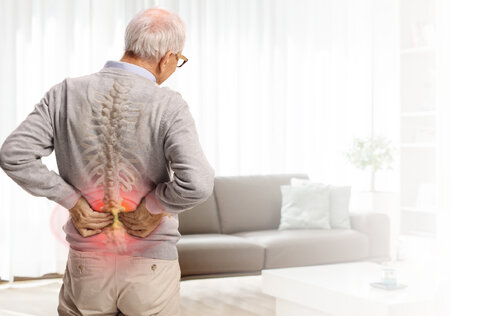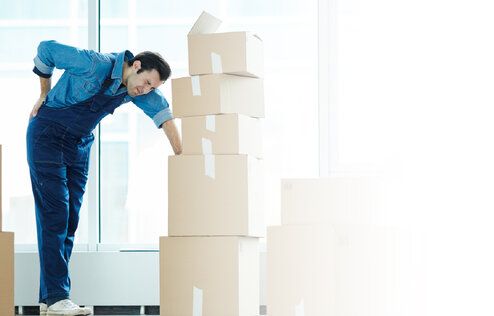
Choose to read by topic:
Lumbar Disc Herniation is one of the most common spinal disorders. Initially, most people will experience lower back pain, before the pain worsens over time and disturbs daily activities. The disc of the spine is mostly known as the rubbery cushions sitting between the vertebrae. The center of the disc, the nucleus, is soft and jelly-like, whereas the exterior, the annulus, is tough and rubbery. The term "herniated disc" refers to problems with these structures that cause severe pain and possibly neurological deficits. Sometimes, people with a herniated disc will feel nothing until the condition worsens. Treatments for Lumbar Disc Herniation are varied, depending on the condition.
What is Lumbar Disc Herniation
Before we learn more about the abnormality of the aforementioned condition, let’s learn some basic anatomy of the human body.
What is Lumbar Spine
The vertebral column consists of 30 vertebrae. The space between each vertebra lies the spongy discs, the shock absorber of the spine. The parts of the vertebral column are divided as follow: the cervical spine (7 vertebrae), the thoracic spine (12 vertebrae), the lumbar spine (5 vertebrae), and the sacral spine (5 vertebrae which also include the coccyx).
The lumbar spine has 5 vertebrae, located in the lower back. Lumbar Disc Herniation refers to a ruptured or slipped disc at the lumbar level.
Lumbar Disc Herniation definition
Lumbar Disc Herniation can be categorized into two main groups: bulging discs and ruptured or herniated discs. A bulging disc is defined by the condition in which the intervertebral disc has dried out. The loss of fluid generally occurs as we age, as a result of degenerative changes. This results in the breakdown of the disc, allowing more pressure to be applied to the vertebrae. Hence, the inner structure, which is soft and jelly-like, bulged out through the leakage or the tear of the exterior layer.
A ruptured or herniated disc, on the other hand, refers to the state of continued stress applied to the spine. The annulus cannot maintain its shape and starts tearing, letting the nucleus rupture or herniate in the process. Because the spinal nerve roots are located just beside the vertebrae, this type of disc herniation usually results in nerve root compression. When the nerve root gets pinched or compressed, neurological deficits such as numbness and weakness occur.
Lumbar Disc Herniation Causes
There are several factors contributing to Lumbar Disc Herniation. However, the main cause is the change of the normal structure. Typically, the condition is common with elderly people, as the degenerative changes, the discs have become thinner. The breakdown process is a natural change. We can summarize the main causes of Lumbar Disc Herniation as follow:
- Aging, causing disc degeneration.
- Prolonged use of back muscles for a long period of time. This includes a regular lifting and back twisting.
- A fall or a traumatic event. This is generally a rare case.
Risk Factors for Lumbar Disc Herniation
Risk factors for Lumbar Disc Herniation also include:
- Weight. Excess body weight generally causes the back muscles to strain easily. The increasing weight puts extra stress on the spine and lumbar disc.
- Genetics. A history of family members having disc herniation is a predisposition to developing the disc herniation.
- Occupation. Some occupations with repetitive movements or physical demand can lead to disc herniation. Repetitive movements include lifting, twisting, bending sideways, pulling, and pushing.
- Sedentary lifestyle. Regular exercise can help prevent the condition.
- Frequent driving. Prolonged sitting position generally includes driving and working on computers.
- Being exposed to vibrations. Some activities that expose people to the vibrations of the motor engine or equipment can increase the risk of developing disc herniation and back pain.
Lumbar Disc Herniation Symptoms
Generally, Lumbar Disc Herniation signs and symptoms include:
- Back pain.
- Radiating pain into the buttock, the legs, the feet.
- Numbness or tingling sensations.
- Muscle weakness in the legs.
- Decrease or loss of reflexes at the knee or the ankle.
It is noted that disc herniation can occur either in the neck or the back, or in some severe cases, both sites. The severity and the pattern of symptoms are varied, depending on the level of the pathology. This includes the stage of disc herniation as well. If the disc has protruded and disturbed the spinal nerves, neurological deficits will be present.
Another distinct symptom of lumbar disc herniation is that the pain gets worse when you sneeze, cough, or move into certain positions. Changing position from sitting to standing and rolling to sides usually aggravate the pain.
Back pain can be either dull ache or sharp pain, depending on each person’s health condition. However, if there’re neurological symptoms, the pain is usually described as sharp, burning pain shooting along the legs, or the feet.
Complications of Lumbar Disc Herniation
Lumbar Disc Herniation is bad as it is, but it can lead to other complications as well. It is noted that the spinal cord can be affected because of this condition. The spinal cord ends just about your waist (approximately at the level of L1-L2 vertebrae), a group of nerve roots descending below the end of the spinal cord (conus medullaris) is called “cauda equina”. Lumbar Disc Herniation can also affect these spinal nerves, either the entire group of nerves or just some parts of them.
The signs and symptoms that the spinal cord or the cauda equina has been affected are:
- Worsening symptoms. The pain keeps getting worse and becomes so severe.
- Bladder or bowel dysfunction.
- Saddle anesthesia. A saddle means the area of the inner thighs, back of the legs, and the area around the buttock or the anus.
If you experience these symptoms, seek professional help immediately. They indicate a need for emergency medical attention.
Diagnosis for Lumbar Disc Herniation
How is Lumbar Disc Herniation diagnosed?
The doctor will begin with a history taking and physical examination. Then, additional imaging scans such as MRIs, X-rays, or CTs may be needed to confirm the hypothesis. Sometimes, the doctor may order a myelogram, a procedure using the dyed injection inserted into the spinal cord to see the structure more clearly on the X-rays.
EMG may be considered as another method to diagnose Lumbar Disc Herniation as well. EMG or Electromyography, is a test that measures muscle response by determining the electrical activity according to the nerve’s stimulation of the muscle. EMG is usually used when the doctor wants to check if your nerves and muscles still function properly and in sync.
Treatment for Lumbar Disc Herniation
Most patients with Lumbar Disc Herniation will recover within a few weeks to months. Because it involves the vertebral column and the soft tissues surrounding it, progress is usually slow. It may take around 3–4 months for the symptoms to finally fade off. The pain can still flare up as an episode in the period of recovery as well. Generally, treating Lumbar Disc Herniation is a long journey that requires endurance and time.
Nonsurgical Treatment
Non-surgical treatments for Lumbar Disc Herniation include:
- Rest. A bed rest of 1-2 days can improve the case of severe back pain. It is suggested that patients with Lumbar Disc Herniation not stand on their feet for a long period of time. The extra stress applied on the spine and the disc will likely result in more pain. Rest is required. You can resume activities as tolerated.
- Changing your movements. Avoid fast movements or twisting the trunk. It is recommended that you continue your routine slowly with regular breaks. Avoid bending forward or backwards. Avoid lifting objects.
- Medications. NSAIDs and neuromodulating drugs or opioids are generally prescribed by the doctor to relieve pain.
- Physical therapy. Physical therapy sessions usually include modalities to relieve pain: ES (Electrical Stimulation) and Therapeutic Ultrasound Therapy. Gentle exercises and mobilization can also relieve pain.
- Epidural steroid injection. The spinal injection may be considered if the aforementioned treatments are unsuccessful. However, the injection provides a short-term solution to the pain by reducing inflammation. Consult your doctor about what is safe and which treatment is suitable for you.
Surgical Treatment
Some patients with Lumbar Disc Herniation may require surgery. Spine surgery is generally considered only after a period of non-surgical treatment has not relieved the pain. If the condition is so severe, the doctor may consider surgery. Some symptoms worth mentioning are bowel and bladder dysfunction, the loss of muscle control, and numbness, for they indicate the need for an emergency.
Lumbar Disc Herniation can be treated with these techniques:
- Microdiscectomy. Microdiscectomy is one of the most common techniques used to treat Lumbar Disc Herniation. Mostly, the procedure is used to treat a single herniated disk. A small incision is made at the level of disc herniation. A microscope may be used to remove the herniated disc along with the additional fragments or tears, relieving the pressure from the spinal nerves.
- If the endoscope is used, the procedure is called “Endoscopic discectomy”. The difference is the use of an endoscope in the procedure.
Both techniques are commonly used to treat Lumbar Disc Herniation. They are minimally invasive. The techniques offer fast recovery and low risks of complications. The patients undergoing surgery usually need just an overnight stay at the hospital. Most patients can resume their activities and daily lives in 1-3 weeks.
Prevention for Lumbar Disc Herniation
Despite being mainly caused by degeneration, Lumbar Disc Herniation can be prevented. Here are some suggestions that you may consider in order to prevent yourself from the condition.
- Maintain a good posture. A poor posture is generally considered to be an important prerequisite to developing the condition.
- Maintain a healthy weight. Extra weight means extra stress applied on your spine. Beware of how your vertebral column and back muscles have to work hard everyday to maintain your posture and help you function. Keeping your BMI in the normal level is suggested.
- Regular exercise. Muscle strength and endurance decrease as we age. Sedentary lifestyle helps nothing about it as well. Hence, a regular exercise is suggested to keep yourself healthy and fit, especially core-stabilization exercise and back muscle exercises.
- Avoid repetitive movements, such as lifting, twisting, and bending your back.
- Quit smoking.
Lumbar Disc Herniation Conclusion
Lumbar disc herniation is one of the most common spinal disorders. The condition usually presents with back pain and neurological deficits: muscle weakness and numbness. In some cases, the pain may radiate into the thighs, the legs, or the feet, depending on the level of the affected disc. Non-surgical treatments for disc herniation include rest, medications, physical therapy, and spinal injection. Surgery may be required if there are symptoms indicating an emergency. It is suggested that you consult your doctor about your condition to get proper treatments.
Online Consultation
Article of Spine Center

